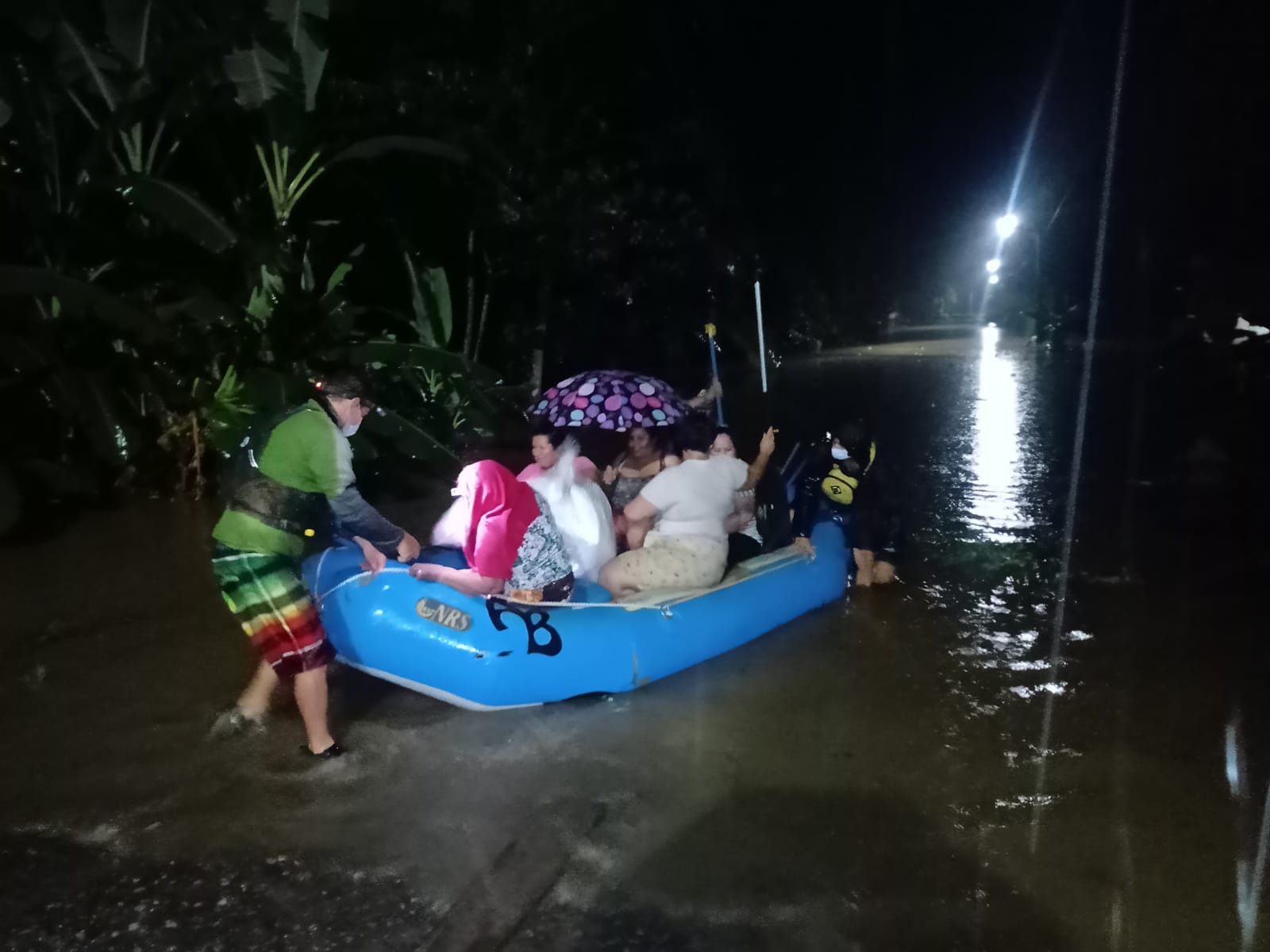The Sarapiquí Early Warning System has been a pilot for regions in the rest of Costa Rica, as Alfonso Gatgens detailed in yesterday’s longform piece. However, the devastating floods that occurred at the end of July 2021 revealed a new challenge for the system. Here is his account of what happened in recent days:
A few days after I completed the research for my report for El Colectivo 506 on the Early Warning System (SAT) in Sarapiquí, which took about a month, an extreme weather phenomenon occurred that affected 14 cantons in Costa Rica’s Northern Zone and Caribbean slope.
On Wednesday, July 21, this phenomenon intensified, hitting Turrialba during the afternoon. The images shared on social networks were shocking, showing the relentlessness of nature.
During the afternoon of that Wednesday, the rains in the canton of Sarapiquí grew stronger as well.
The Municipal Emergency Commission began coordinating, as did its organized communities. The warnings for possible floods were given, and the weather also provided its own early warning.
At about 10 p.m. on that Wednesday, I traveled from Horquetas, where I live, to Puerto Viejo, the municipal capital of Sarapiquí, where the first emergencies were taking place. The Red Cross and Firefighters were saving the lives of families in neighborhoods such as Carretones and Naranjal 1. In the case of Naranjal 1, some 20 families were rescued; the water was already flooding their streets and houses.
The Early Warning System (SAT) was activated in our various communities, either via radio communication or using a WhatsApp option for alerts. However, in the field, we were already noting a recurring complaint by members of the Community Emergency Committees, Firefighters, and the Red Cross. Residents had been warned starting in the early hours of the crisis to leave their homes and travel to safe places, but they did not leave until their homes were already flooded.
As of 10 pm, reports of flood emergencies started coming in massive quantities to the relief forces, staffed by a small but hard-working personnel who had to remove people from their homes with rafts provided by private companies. They carried out this work until the wee hours of the morning on Thursday.
However, the emergency just starting. The rains did not let up for three days. My plans to go home after reporting what happened on Wednesday night and early Thursday morning were cut short because the water blocked Route 4, the main highway in Sarapiquí. On my first morning, after work, I slept in my car in front of the Puerto Viejo de Sarapiquí Red Cross Committee.
On Saturday morning, the water began to subside, and some sunshine finally peeked through. That day I thought about going home, but the emergency was not over.
In Puerto Viejo, they had to vacate the clinic that had been flooded. Boats with volunteers and lifeguards crossed back and forth in front of the Banco Nacional to remove people from nearby neighborhoods and take them to safety.
The various shelters in Sarapiquí now housed more than 1600 people.
Information began to arrive from border areas through social networks and videos showing that communities such as Tambor, Remolinito, San Antonio, Cureña and Cureñita, among others, were under water. Only the roofs of the houses were visible.
On Sunday, we registered the first person to die from the floods, in the community of Caño San José. He was an older adult who went out by boat to rescue his cattle and did not return home. That Sunday, he was found dead at an area farm.
As the waters began to subside, people in many of these communities began to complain about the lack of assistance, food and water that was coming from the Municipal Emergency Committee. Organized civil society groups came to these border communities to help. When I consulted Vanessa Rodríguez, Vice Mayor of Sarapiquí and the coordinator of the Municipal Emergency Commission, she said it was still very difficult to reach those areas, some still under water, and that the arrival of some of the supplies to aid families had been delayed.
On Monday and Tuesday nights, relief entities managed to enter the first communities with food and drinking water. From now, the work of the Municipal Emergency Committee will be to reach all the communities and meet their needs while the emergency passes.
The conclusion of the inhabitants of Puerto Viejo is that this flood was even bigger than the one that happened in 2005.
At the close of our July edition, “Watershed,” the response to the recent floods in Costa Rica continues. Our commitment as a media organization is to continue looking for resources and opportunities to follow up on the issues that Alfonso and four other Network 506 journalists reported this month. All readers are invited to attend a special panel, “Can Communities Truly Prepare for an Emergency? Network 506 Journalists Speak Out.” This event, open to all, will take place on Saturday, August 7 at 3:30 pm CR / 5:30 pm ET. July contributors will share some of the challenges, successes and lessons learned from this innovative journalism project. English translation will be provided via Zoom chat. Zoom Meeting ID 871 0774 1895, Passcode: 438541 Join us!





